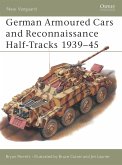Although not as well-known as the V-1 buzz bomb and the V-2 missile, the first German missiles to see combat were anti-ship missiles, the Henschel Hs.293 guided missile and the Fritz-X guided bomb. These began to see extensive combat in the Mediterranean in 1943. In their most famous use, the Italian battleship Roma was sunk by a Fritz-X attack in September 1943 when Italy attempted to switch sides. The serious threat posed by these missiles led to a vigorous but little known 'Wizard War' by the Allies to develop electronic counter-measures, the first effort of its kind. Besides the anti-ship missiles, the other major category of German missiles were the air-defence missiles. Germany suffered extremely heavy losses from Allied strategic bombing attacks, and German fighter and flak defences proved increasingly unsuccessful. As a result, the Luftwaffe began an extensive programme to deploy several families of new air defence missiles to counter the bomber threat, including the Wasserfall, Schmetterling, and others. This book traces the origins of these missile programmes and examines their development and use in combat. With full-colour illustrations and detailed explorations of the stories behind the missiles, this study offers a comprehensive overview of German guided missiles in the World War II era.
Hinweis: Dieser Artikel kann nur an eine deutsche Lieferadresse ausgeliefert werden.
Hinweis: Dieser Artikel kann nur an eine deutsche Lieferadresse ausgeliefert werden.








